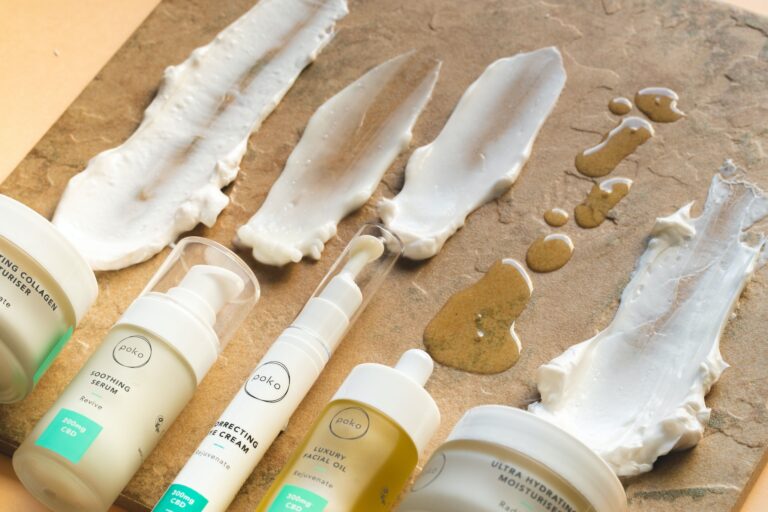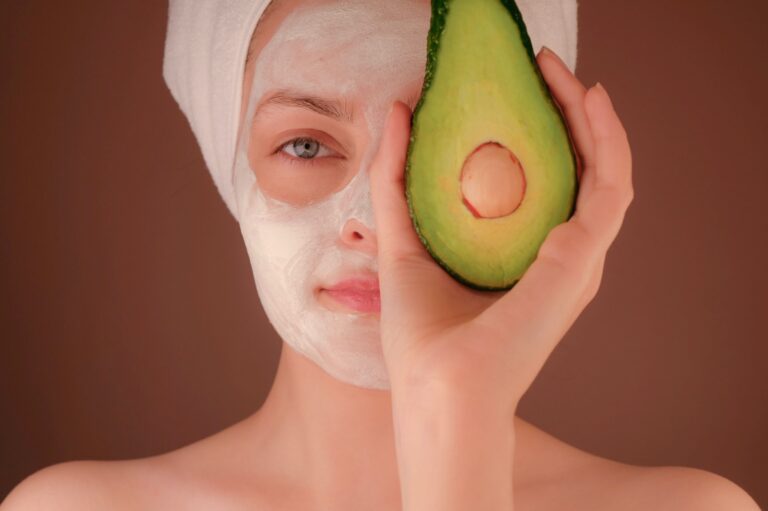Understanding Hyperpigmentation: Causes, Types, And Effective Treatment Options
As an Amazon Associate, I earn from qualifying purchases.
Disclosure: Some of the links in this article may be affiliate links, which can provide compensation to me at no cost to you if you decide to purchase a paid plan. You can read our affiliate disclosure in our privacy policy.
Understanding Hyperpigmentation: Causes, Types, And Effective Treatment Options
Introduction
Hyperpigmentation, a common skin condition characterized by darker patches of skin, affects countless individuals worldwide. This pesky problem can derive from various factors such as sun exposure, hormonal changes, inflammation, genetics, and injuries to the skin.
In this comprehensive blog post, we will delve into the different types of hyperpigmentation like melasma and age spots while exploring effective treatment options that help regain an even complexion.
Key Takeaways
- Hyperpigmentation can be caused by sun exposure, hormonal changes, post – inflammatory hyperpigmentation (PIH), and melasma.
- Effective treatment options for hyperpigmentation include topical creams and serums containing ingredients such as hydroquinone, retinoids, kojic acid, vitamin C and azelaic acid. Chemical peels and laser treatments can also be effective in reducing the appearance of dark spots.
- Prevention is key to avoiding further damage to the skin. Daily sunscreen use with an SPF of at least 30, establishing a proper skincare routine that includes gentle cleansers and Vitamin C serums along with protective clothing measures are crucial prevention methods. Consultation with a dermatologist may also be necessary for personalized advice on treatment options.

Causes And Types Of Hyperpigmentation
Sun exposure, hormonal changes, post-inflammatory hyperpigmentation (PIH), and melasma are the most common causes of hyperpigmentation.
Sun Exposure
Sun exposure is one of the leading causes of hyperpigmentation, with UV rays from the sun being responsible for triggering an increase in melanin production. Melanin, a pigment that determines our skin color, serves as our body’s natural defense against harmful ultraviolet (UV) radiation.
When exposed to sunlight, melanocytes – specialized cells within our skin – release more melanin to protect us from UV damage.
However, excess sun exposure can lead to an overproduction of melanin in certain areas of the skin, resulting in dark spots or uneven pigmentation known as solar lentigines or age spots.
These often appear on parts of our bodies most frequently exposed to sunlight – like the face, hands, and arms. It is especially important for individuals who have experienced hyperpigmentation previously or those prone to developing it due to genetics or other factors – such as having darker skin tones – to be diligent about proper sun protection measures.
This includes using sunscreen with an appropriate SPF level (at least 30), wearing protective clothing when outdoors during peak hours and seeking shade whenever possible.

Hormonal Changes
Hormonal changes are a common cause of hyperpigmentation, particularly in women. Fluctuations in hormone levels can lead to an overproduction of melanin – the pigment responsible for skin color – resulting in dark patches or spots on the skin.
However, it’s not just pregnant women who may experience hormonal-induced pigmentation issues; birth control pills or hormone replacement therapy can also trigger these imbalances.
Additionally, conditions such as Addison’s disease and polycystic ovarian syndrome (PCOS) can disrupt hormone production and contribute to uneven skin tone.
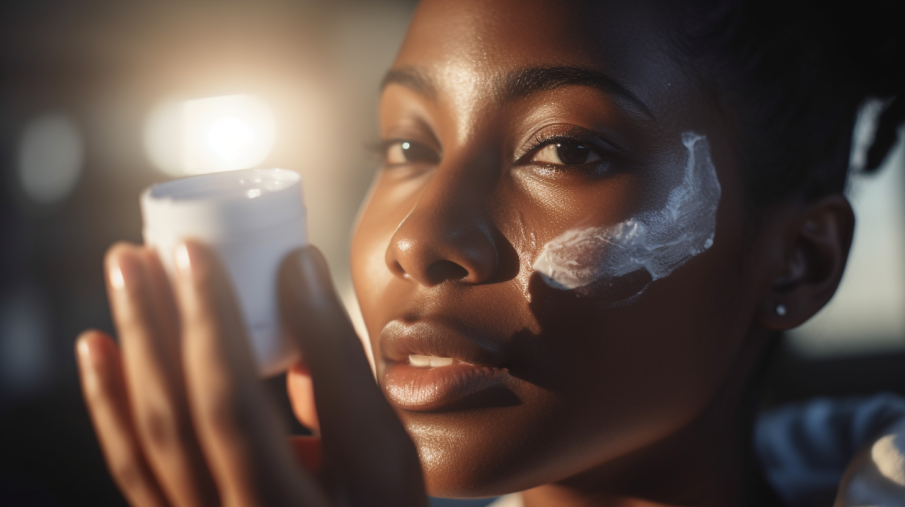
Post-inflammatory Hyperpigmentation (PIH)
Post-inflammatory hyperpigmentation (PIH) is a type of skin discoloration that often occurs after an injury or inflammation has healed. It may manifest as darker spots, patches or marks left behind by conditions such as acne, eczema, psoriasis, and even burns.
Several factors can contribute to the development of PIH, including overproduction of melanin during the healing process and damage to melanocytes – the cells responsible for producing pigment.
While it’s essential to address the underlying cause for effective treatment, options like topical creams containing hydroquinone or azelaic acid have proven beneficial for lightening these dark spots.
In some cases, professional procedures such as chemical peels and laser treatments may be warranted under a dermatologist’s supervision.

Melasma
Melasma is a type of hyperpigmentation that typically affects women and is caused by hormonal changes. It appears as brown or grayish-brown patches on areas of the face, such as the cheeks, forehead, nose, and upper lip.
Pregnancy, birth control pills, and hormone replacement therapy can all trigger melasma.
To treat melasma effectively, topical creams containing hydroquinone or retinoids can be used along with sun protection measures like wearing hats, using sunscreen daily (SPF 30 or higher), and avoiding direct sunlight during peak hours.
Chemical peels and laser treatments may also be effective in reducing melanin production and improving skin tone for people with melasma.
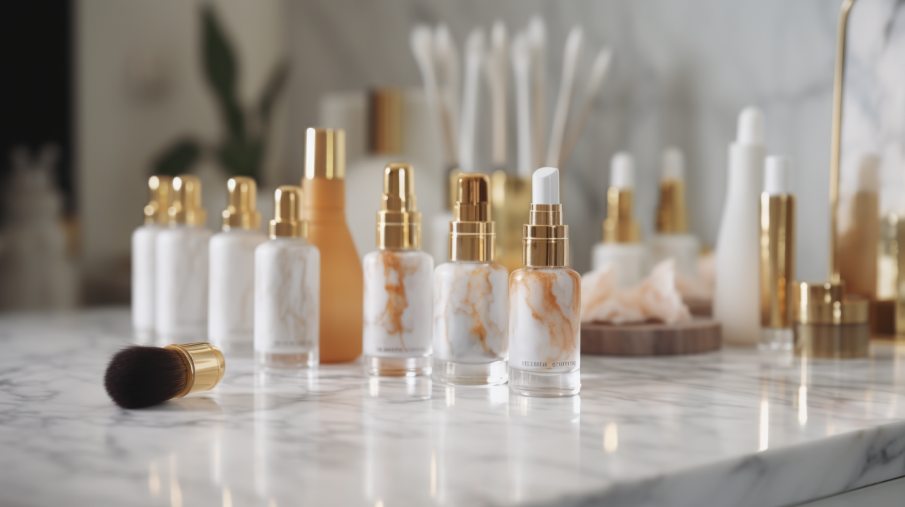
Treatment Options For Hyperpigmentation
Effective treatment options for hyperpigmentation include topical creams, acid peels, laser therapy, and other medical procedures.
Topical Creams And Serums
Topical creams and serums are an effective way to treat hyperpigmentation. These products can be used at home and are often less expensive than professional treatments. The most common ingredients in these products include:
- Hydroquinone: This ingredient is a skin-lightening agent that reduces the production of melanin, the pigment responsible for dark spots on the skin.
- Retinoids: Topical retinoids such as tretinoin can help to even out skin tone by promoting cell turnover and reducing the appearance of dark spots.
- Kojic acid: This natural ingredient is derived from mushrooms and helps to inhibit melanin production, making it a good choice for treating hyperpigmentation.
- Vitamin C: This antioxidant helps to brighten the skin and reduce the appearance of dark spots over time.
- Azelaic acid: This ingredient works by reducing inflammation in the skin, which can help to prevent post-inflammatory hyperpigmentation.
When choosing a topical cream or serum for hyperpigmentation, it’s important to consider your skin type and any other skincare concerns you may have. Additionally, you should always wear sunscreen with an SPF of 30 or higher when using these products, as they can increase your sensitivity to UV rays.
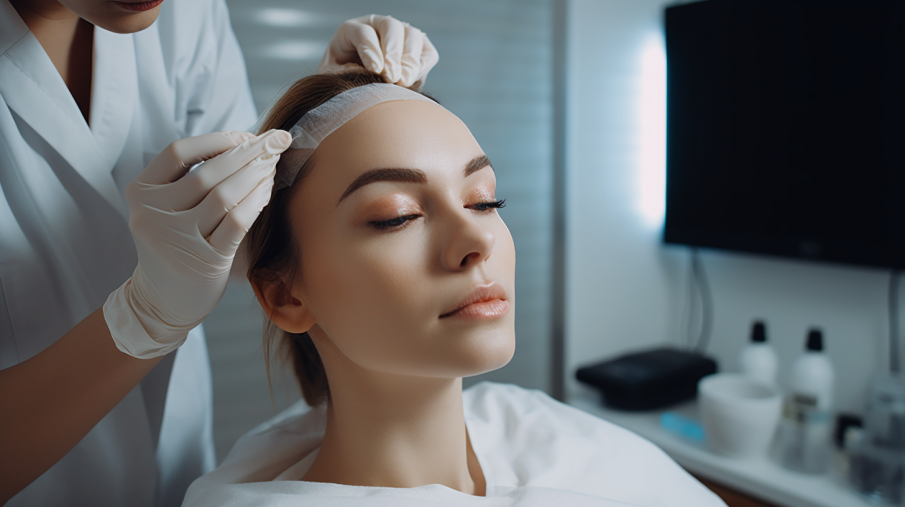
Chemical Peels
Chemical peels are a popular treatment option for hyperpigmentation. Here’s how it works:
- A chemical solution is applied to the skin, which causes the outer layer of skin to peel off.
- This reveals fresher, smoother skin underneath.
- Chemical peels come in different strengths, and some can even penetrate deeper into the skin to treat more severe cases of hyperpigmentation.
- Glycolic acid and salicylic acid are common ingredients used in chemical peels for hyperpigmentation.
- A dermatologist can help determine the best strength and type of chemical peel for your skin type and specific condition.
Laser Treatments
Laser treatments are a popular option for treating hyperpigmentation and can help to reduce the appearance of dark spots on your skin. Here are some important details to keep in mind about laser treatments:
- Laser therapy uses targeted beams of light that penetrate the skin to break up excess pigment.
- The efficacy of laser treatments depends on the type of hyperpigmentation and the severity of the condition, as well as the individual’s skin type and other factors.
- There are several different types of lasers used to treat hyperpigmentation, including Nd:YAG, Alexandrite, and Q-Switched lasers.
- Before undergoing laser treatment, it is important to consult with a qualified dermatologist or skincare specialist who can assess your individual situation and recommend the best course of treatment.
- Laser treatments typically require multiple sessions over a period of weeks or months in order to achieve optimal results.
- After undergoing laser therapy, it is important to avoid sun exposure and wear proper sun protection (such as SPF 30+ sunscreen) to prevent further damage or hyperpigmentation from occurring.
By incorporating laser treatment into your skincare routine, you can effectively target dark spots caused by hyperpigmentation and achieve clearer, more even-toned skin.
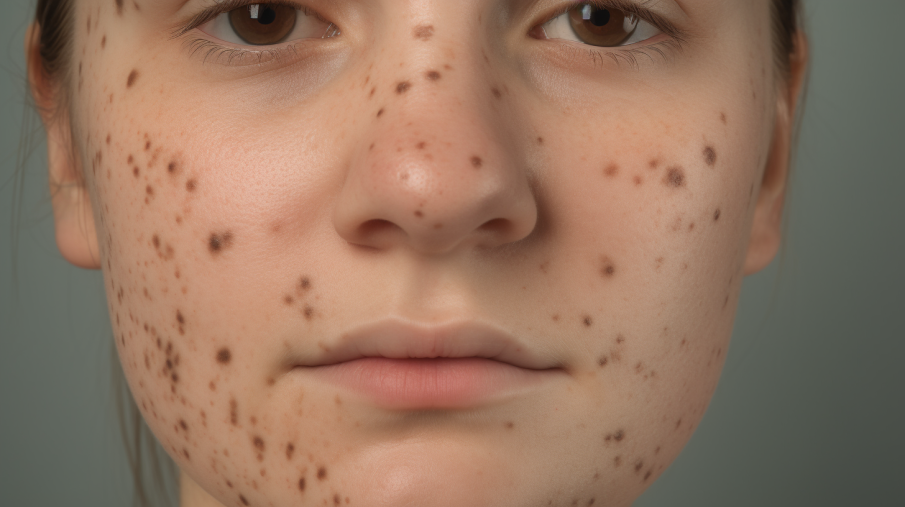
Prevention And Precautions
To prevent hyperpigmentation, it is important to use daily sunscreen with an SPF of at least 30 and to establish a proper skincare routine. Consultation with a dermatologist may be necessary for those who are prone to developing patches of skin hyperpigmentation.
Sunscreen Use
Sunscreen is a crucial component in preventing hyperpigmentation caused by sun exposure. It protects the skin from harmful ultraviolet (UV) rays, which stimulate the production of melanin and cause dark spots and uneven skin tones.
When choosing a sunscreen, make sure to look for a broad-spectrum option that offers protection against both UVA and UVB rays with an SPF of at least 30.
Zinc oxide and titanium dioxide are physical blockers that provide excellent protection against UV radiation without irritating the skin. To maximize its efficacy, apply sunscreen generously over any exposed areas 15-20 minutes before going outside and reapply it every two hours or immediately after swimming or excessive sweating.
Proper Skincare Routine
Maintaining a proper skincare routine is crucial in preventing and reducing hyperpigmentation. This includes cleansing, toning, moisturizing, exfoliating, and protecting your skin from harmful UV rays.
Using the right products for your skin type can significantly improve your skin’s texture, tone, and health. For example, incorporating Vitamin C serums into your skincare regimen can help brighten the appearance of dark spots caused by hyperpigmentation.
Additionally, using gentle cleansers that do not irritate or damage the skin barrier is also essential in promoting healthy skin. Finally, don’t forget to apply sunscreen daily with an SPF 30 or higher to ensure optimal sun protection against harmful UV rays that can trigger melanin production and worsen existing hyperpigmentation issues.

Consultation With A Dermatologist If Needed.
If you’re dealing with hyperpigmentation, it’s always a good idea to consult with a dermatologist to get personalized and professional advice.
Your dermatologist can also prescribe stronger treatments like prescription-strength retinoids or azelaic acid if over-the-counter products aren’t working for you.
Moreover, they will perform a thorough evaluation and conduct a skin biopsy if needed. Remember, not all hyperpigmentation is created equal, so it’s important to seek expert advice before trying any new skincare product or treatment.
Conclusion
In conclusion, hyperpigmentation is a common skin condition that affects many people. It can be caused by various factors such as sun exposure and hormonal changes but effective treatment options are available.
Topical creams, acid peels, laser therapy, and other medical procedures have shown to be effective in treating different types of hyperpigmentation. However, prevention is key with proper skincare routine and sun protection measures to avoid any further damage to the skin.
FAQs:
1. What are the common causes of hyperpigmentation?
Hyperpigmentation can be caused by a multitude of factors including sun exposure, hormonal changes, genetics or medications. Additionally, certain skin conditions such as acne and eczema can also lead to hyperpigmentation.
2. How do I know what type of hyperpigmentation I have?
There are several types of hyperpigmentation including post-inflammatory hyperpigmentation (PIH), melasma and age spots. A dermatologist can examine your skin and determine which type is affecting you in order to recommend an appropriate treatment plan.
3. What are some effective treatment options for hyperpigmentation?
Effective treatments for hyperpigmentation include topical lightening agents, chemical peels, laser therapy and cryotherapy. In some cases, lifestyle changes like wearing protective clothing or reducing sun exposure may also help improve the appearance of pigmented areas.
4. Is it possible to completely remove hyperpigmented areas from my skin?
While complete removal is not always possible, many individuals see significant improvement in their pigmented areas with proper treatment plans according to clinical research studies . Consistency with recommended treatments while limiting frequency & intensity could help minimize these concerns over time as well depending upon severity/depths involved – consulting a dermatologist would offer more insight into specific options available at this stage ensuring that continued mitigation occurs beyond initial results achieved during course(s) utilized earlier on..
Source URLs
https://www.medicalnewstoday.com/articles/323808
https://www.ncbi.nlm.nih.gov/pmc/articles/PMC4142815/
https://my.clevelandclinic.org/health/diseases/21885-hyperpigmentation
https://www.healthline.com/health/beauty-skin-care/hyperpigmentation-treatment
https://www.skymd.com/conditions/skin-discoloration/hyperpigmentation
https://www.harpersbazaar.com/uk/beauty/skincare/a37685934/hyperpigmentation-treatments/




